#brontotheres
Explore tagged Tumblr posts
Text

Throwback Thursday! This archival image, snapped sometime before 1921, depicts a Museum preparator sculpting a clay model of an extinct brontothere. Many brontotheres, or “thunder beasts,” had large bony “horns” on their snouts. Strong neck musculature suggests that these animals may have used their headgear to batter rivals or defend themselves from predators. These horns may have also been used to attract mates: However, such paleontological puzzles are hard to test and solve with any certainty when no close evolutionary relatives are still living. Brontotheres became extinct about 30 million years ago during the Eocene.
Photo: © AMNH Library / Image no. 35734
#science#amnh#museum#nature#natural history#animals#paleontology#fact of the day#did you know#brontotheres#ancient animals#cool animals#natural history museum#museum of natural history#archival photography
529 notes
·
View notes
Text
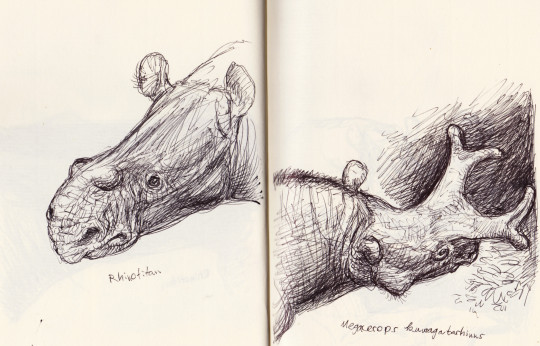


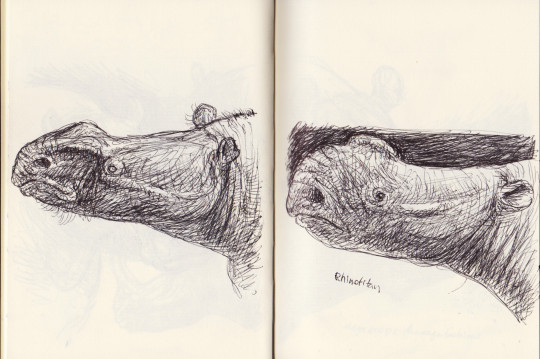

Some pages from one of my sketchbooks.
For some time I looked a little more at brontotheres, an often overlooked but beautiful and diverse group of mammals.
312 notes
·
View notes
Text

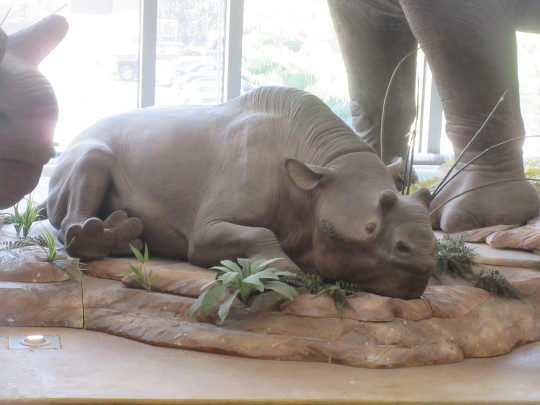

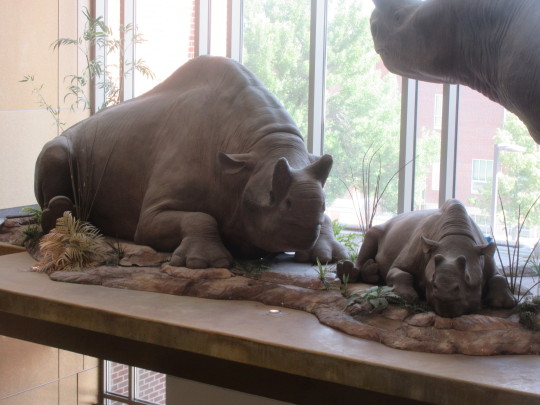
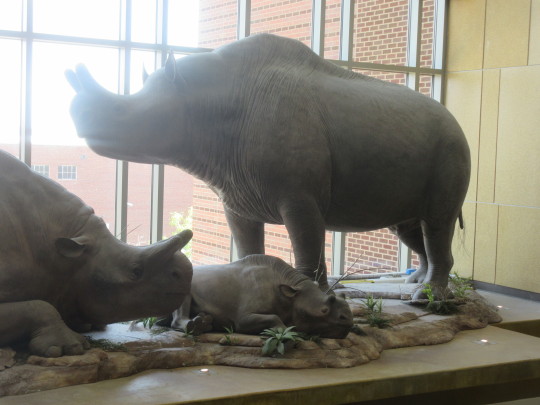

Brontothere Family, South Dakota School of Mines and Technology Paleontology Research Center
Relocated from the Field Museum
24 notes
·
View notes
Text

It’s time to give the animals of the Cenozoic a day in the limelight…
#cenozoic mammals#cenozoic era#cenozoic#works in process#work in progress#work in process art#work in progress art#art wip#wip#mammoths#wooly mammoth#wooly rhino#smilodon#basilosaurus#andrewsarchus#brontothere#paraceratherium#deinotherium#hominids#paleocene#eocene#oligocene#miocene#pliocene#pleistocene#pleisotcene megafauna#paleogene#neogene#quaternary#megalodon
419 notes
·
View notes
Text
Artober Day 12. A Megacerops scapula.

#artober#sci art#graphite#30 min sketch#artober 2024#paleoart#drawing#paleo art#brontothere#megacerops
6 notes
·
View notes
Text
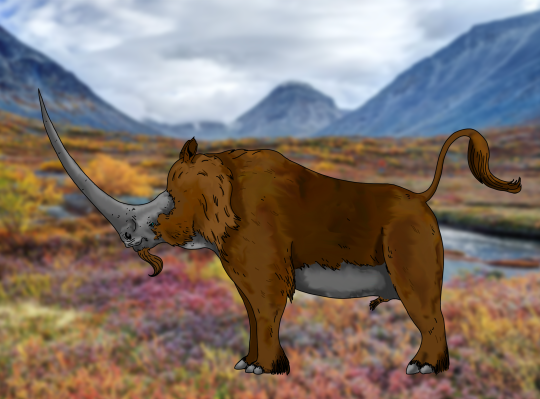
A somewhat brontothere-inspired Unicorn drawn for @adanceofdumbasses. This is the summer coat, a lot shorter than the winter pelt.
43 notes
·
View notes
Text
Monarch Episode 9
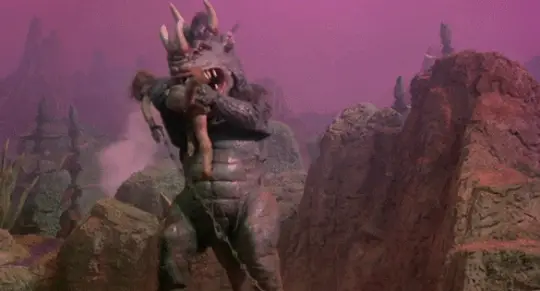
If I had a nickel for every time a piece of monster media featured a warthog-like monster at the center of the earth, I would have two nickels.
If I also had a nickel for every time a piece of monster media that qualified for the prior criteria also had a scientist character trapped at the earths core construct a bow out of local material, I would have four nickels in total.
#kaiju#kaiju tv#monster#monster movie#bramble boar#brontotherium#mastodonosaurus#apologies to anyone looking up actual brontotheres or temnospondyls
1 note
·
View note
Photo
The frikkin POETRY of this story!

Brontotheres, Zdeněk Burian
Light lunged from both sides of the world. The earth tore itself open and bled flame; a fountain of molten rock hissed from the wound. Cascades of burning rocks thumped against the ground in sudden, erratic rhythms. Streaks of blue fire reached down like witches’ fingers, cracking against the water-filled air. There was no sky—instead a blanket of ash and cloud hung so low the brontotheres feared they would soon feel it on their backs. The baby cried; the mother lowed, and corralled it with the fear-hiding patience mothers do best. The sounds and blinding flashes were disorienting. The bull snorted rain out of his nose as sheets of water ran off his hide and swelled into puddles at his feet. The family moved in search of safety, but the truth was the ground and the sky had betrayed them, and they trusted nowhere while sandwiched between a rupturing earth and panicking heavens.
94 notes
·
View notes
Text
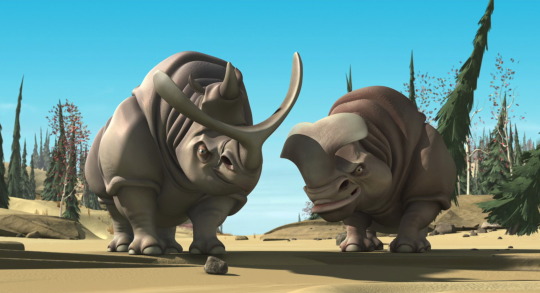
Carl & Frank
0 notes
Text
But while more than half of the nearly 60 known brontothere species tipped the scale at over a metric ton, the first footfalls of these “thunder beasts” weren’t thunderous at all. When the earliest brontotheres appeared in the lush forests of ancient North America and Asia in the early Eocene Epoch, roughly 56 million years ago, they were about the size of a border collie — hardly the stuff of thundering herds.
Within about 16 million years, these modest mammals had grown into a family of giants.
0 notes
Photo
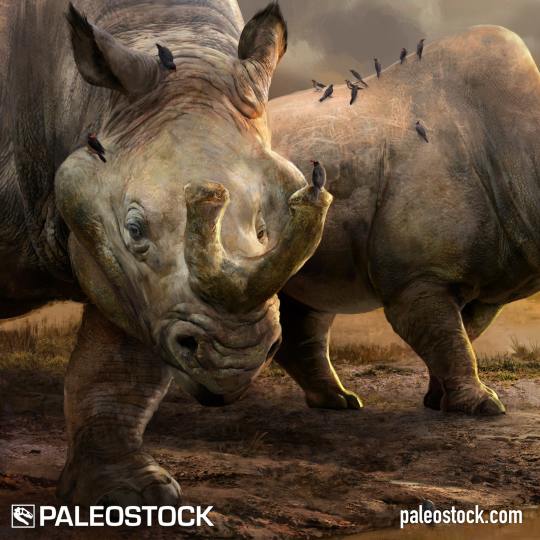
Brontotheres
Brontotheres were massive odd-toed ungulates that lived in the Eocene Epoch.
License this stock resource at: https://paleostock.com/resource/brontotheres-stock-photo
Illustration by Lucas Lima
#paleoart#sciart#science#nature#paleontology#geology#fossil#fossils#evolution#art#illustration#paleostock
104 notes
·
View notes
Text

@cheericrochet Megacerops primitivus is not valid and is a nomen dubium that's likely synonymous with Megacerops kuwagatarhinus (Sweedler et al., 2021). Also, Osborn (1929) named like a million species of brontothere that are no longer considered valid
To all Brontotheres out there: you are valid and I love you
54 notes
·
View notes
Text

Day 27: Beast
Megacerops (formerly known as Brontotherium) is the most bizarre ancient beast of the Cenozoic era.
By the way, did you know why megacerops has a speculative mane on the dorsal along with a under chin beards, it’s mainly because other brontotheres are closely related to horses than to rhinos and tapirs?
5 notes
·
View notes
Text
Unleash the Beasts: Part One

A collection of animals from the Paleocene to Eocene, lasting from 56-33 million years ago, from bottom to top: Arctocyon primaevus, Barylambda feberi, Gastornis geiselensis, Propaleotherium hassiacum, Uintatherium anceps, Ambulocetus natans, Godinotia neglecta, Leptictidium auderiense, Andrewsarchus mongoliensis, Moeritherium andrewsi, Arsinoitherium zitteli, Basilosaurus isis, Dorudon atrox, Embolotherium andrewsi, Megacerops coloradensis, and Apidium phiomense
#paleoart#paleontology#cenozoic fauna#cenozoic era#cenozoic#walking with beasts#fanart#tribute#homage#palaeontology#palaeoart#traditional fanart#basilosaurus#brontothere#andrewsarchus#leptictidium#propaleotherium#gastornis#embolotherium#cenozoic mammals#cenozoic mammal#mammal#mammals#paleogene#paleocene#eocene#youtube
35 notes
·
View notes
Text


I've wanted to do an electric Brontothere for ages and since I've got an electric, rhino-adjacent fossil fakemon already in this region, I decided it could make for a good Ancient Power evo instead. As such, Thundercolt was designed as though it could've been a final evo before gaining it's own evolution in a later game (something i've done a few times in this region). Ponai form small herds, lead by an adult Thundercolt. They don't have the aggressive tendencies of their adult counterparts and so can live together in relative peace, but benefit from their presence to ward off predators. Fast in their own right, their first response is to flee danger but if pressed will fire botls of lightning from their horn. Thundercolt possess a wild temperament and will squabble when in groups much bigger than three. They adopt herds of Ponai and look after them in return for a more peaceful social solution. As well as firing bolts of lightning with their horns they can sunder the earth with the clatter of their hooves, rumbling both the sky and the land. Brontremor are heaving beasts of muscle and are indomitable in their will. With such a stalwart defence they have little need to be so grumpy but nevertheless are dangerous pokemon to be around, easily angered and quick to charge. Little can stop them once they begin running and their footsteps are like the breaking thunder. I was struggling with the poses on these guys so had to do a ref sheet to help me out. Handy to better see their markings too so here it is. --Attack Info-- --Ability Info--
#tresto#fakemon#fakedex#saucylobster#horse#pony#colt#unicorn#brontotherium#megacerops#brontops#rhinoceros
3 notes
·
View notes
Text
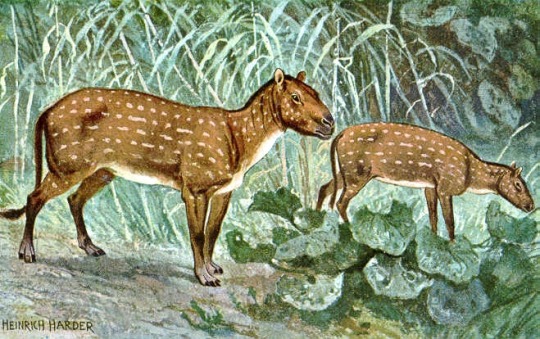

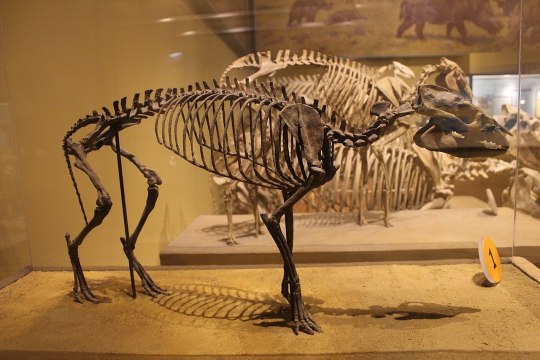
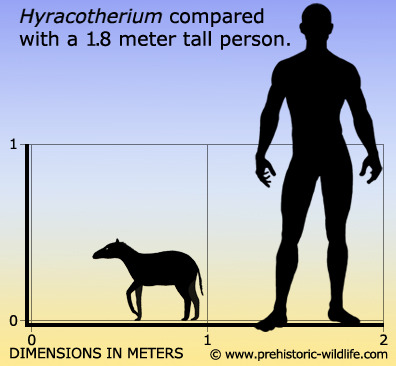
Hyracotherium leporinum
(temporal range: 55-45 mio. years ago)
[text from the Wikipedia article, see also link above]
Hyracotherium (/ˌhaɪrəkoʊˈθɪəriəm, -kə-/ HY-rək-o-THEER-ee-əm; "hyrax-like beast") is an extinct genus of very small (about 60 cm in length) perissodactyl ungulates that was found in the London Clay formation. This small, fox-sized animal is (for some scientists) considered to be the earliest known member of Equidae before the type species, H. leporinum, was reclassified as a palaeothere, a perissodactyl family basal to both horses and brontotheres. The remaining species are now thought to belong to different genera, such as Eohippus, which had previously been synonymised with Hyracotherium.
5 notes
·
View notes